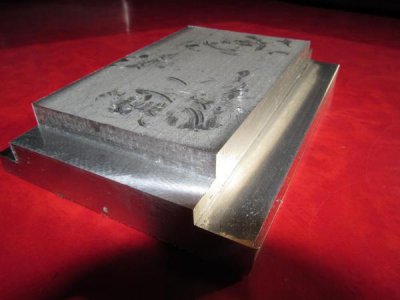Very nice! The work envelope on these machines is about the same as a mini mill, but they're much more robust. Imagine swinging a cutter that size in an X2 or similar mill at that depth of cut...
I found my machine to be pretty picky about the gibs being adjusted just-so. I ended up using a piece of .002" flat spring steel between the gib and the dovetail, tightening the gibs so the table would barely not move, then withdrawing the shim. That worked for me, but I can't find the shim stock anymore. Probably used it for something... Also, the three bolts that hold each side to the knee's ways don't get torqued down, just snugged enough to let the knee travel but not bind. I used split type locking washers under mine to prevent them backing off under vibrations. I thought about loc-tite, the low strength type, but didn't have any on-hand. I may still do that.
If there's any slop in your ways, it'll probably be in the middle of the table. That's where most of the cutting takes place, same as on a regular mill, in the X axis. The knee shouldn't have much wear, and the Z axis (in and out towards the spindle) usually won't either. These machines tended to wear the middle of the tables out before anything.
Using backgear you can power through metal like mad.

I always had the idea of buying some of those 4" diameter carbide-tipped saw blades, mounting it on a faceplate and turning the center hole large enough for an arbor and filing in a keyway. That'd make nice slots in a workpiece.
But I think one of the handiest things I used my mill for was turning short, fat drill bits. In backgear, with a silver and demming drill, I plowed a 1 1/2" hole in aluminum with no trouble at all. Much easier than the drill press would have done.
Awesome to see it making chips! Can't wait to see the finished fixture plate, I may need to make one myself too.


